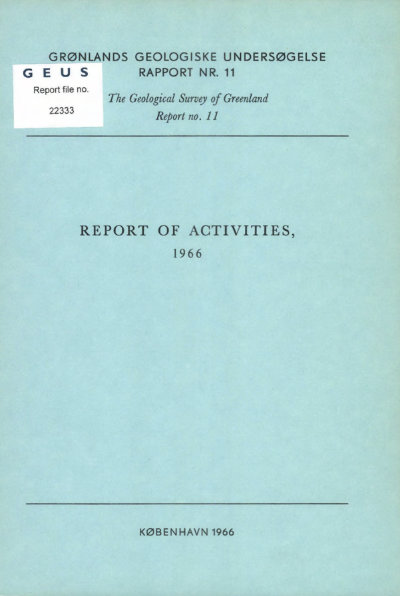Precambrian fossils from the Ketilidian of South-West Greenland
DOI:
https://doi.org/10.34194/rapggu.v11.7152Abstract
Ketilidian low-metamorphic rocks ca. 1700-2000 m.y. old are exceptionally well preserved in the Grænseland-Midternæs area north-east of Ivigtut, South-West Greenland. During the mapping of these rocks structures of possible organic origin were found. A further examination of these structures together with the examination of rock samples from the whole series has shown that both macroscopic and microscopic organic structures are present. The best preserved type is a complex globular structure of about 1/2 mm in diameter (Vallenia erlingi Raunsgaard Pedersen), but most of the organic remnants are microscopic globules and fragments with cellular structures. A description of some of the structures is in press (Bondesen, Raunsgaard Pedersen and Jørgensen, in press). The organic remnants and the sediments of Grænseland are so well preserved that it has been possible to extract small amounts of distinctive organic compounds.
Downloads
Published
Issue
Section
License
This article is distributed under a CC-BY 4.0 licence, permitting free redistribution and reproduction for any purpose, even commercial, provided proper citation of the original work. Author(s) retain copyright over the article contents.


